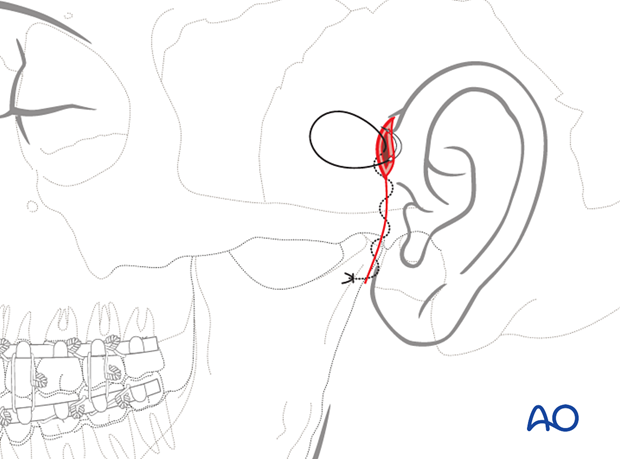Preauricular approach
1. Principles
The preauricular approach can be used to access and treat fractures at the root of the zygomatic arch.
The illustration demonstrates the access and the amount of exposure.
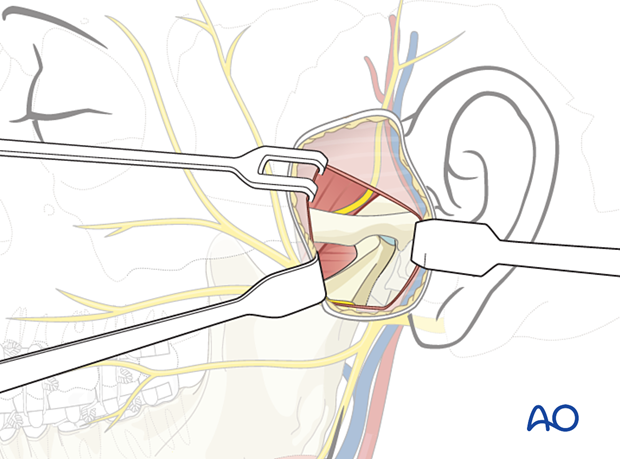
Neurovascular structures
Branches of the facial nerve may be involved in this incision and dissection.
The superficial temporal artery and vein are commonly encountered in this surgical approach. The vessels should be conserved if possible.
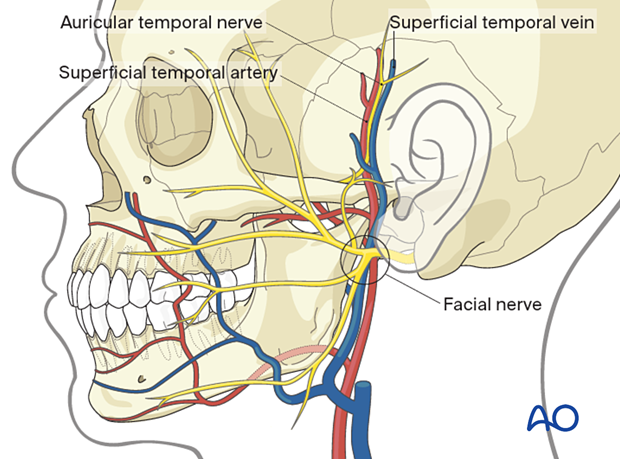
2. Skin incision
General consideration
Use of a solution containing vasoconstrictors ensures hemostasis at the surgical site. The two options currently available are the use of local anesthetic or a physiologic solution with vasoconstrictor alone.
Use of a local anesthetic with vasoconstrictor may impair the function of the facial nerve and impede the use of a nerve stimulator during the surgical procedure. Therefore consideration should be given to using a physiological solution with vasoconstrictor alone or injecting the local anesthetic with vasoconstrictor very superficially.
Make the incision in a preauricular skin crease.
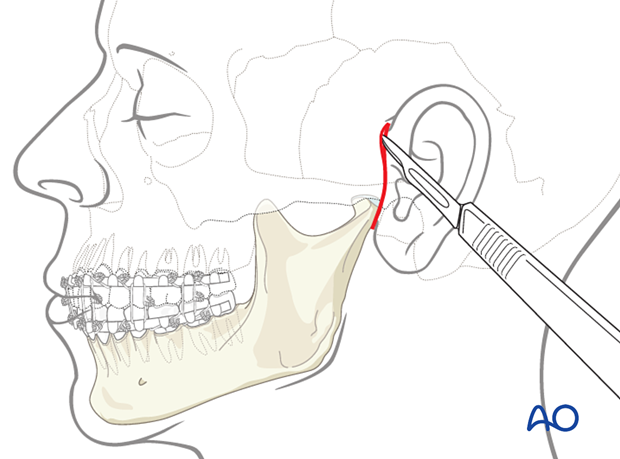
3. Dissection
Locating temporalis fascia
Carry the incision through the skin and subcutaneous tissues to the depth of the temporalis fascia. The temporalis fascia is a glistening white tissue layer best visualized in the superior portion of the incision.
The superficial temporal vessels may be retracted anteriorly with the skin flap (sectioning some posterior and superior branches) or left in place (sectioning frontal branches).
The zygomatic arch can easily be palpated at this point of the dissection. The lateral pole of the mandibular condyle can also be palpated. This can be facilitated by a surgical assistant manipulating the jaw.
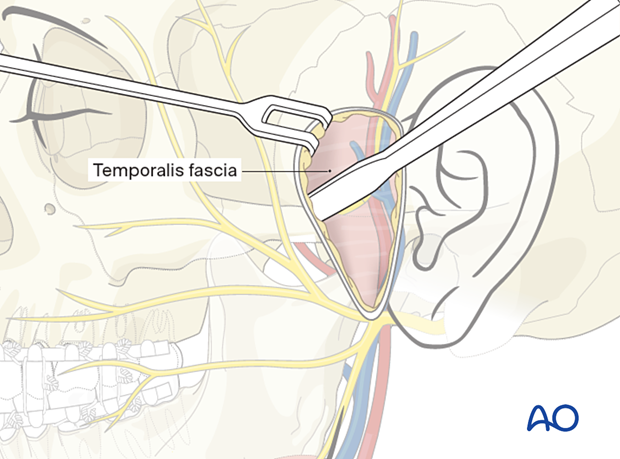
Incising temporalis fascia
Make an oblique incision parallel to the temporal branch of the facial nerve, through the superficial layer of the temporalis fascia above the zygomatic arch.
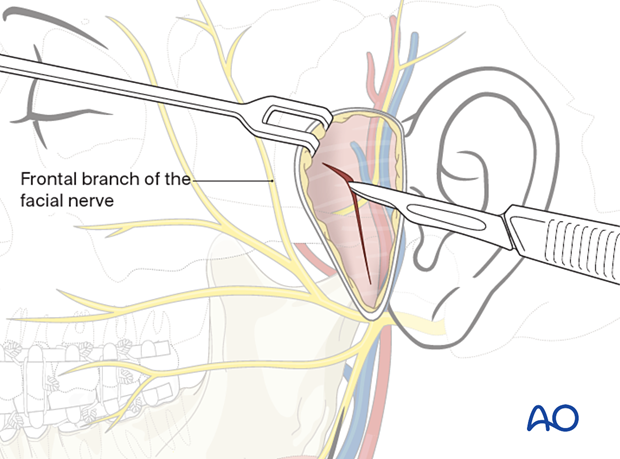
Insert the periosteal elevator beneath the superficial layer of the temporalis fascia and strip the periosteum off the lateral zygomatic arch.
Dissection will be carried inferiorly to expose the capsule of the TMJ.
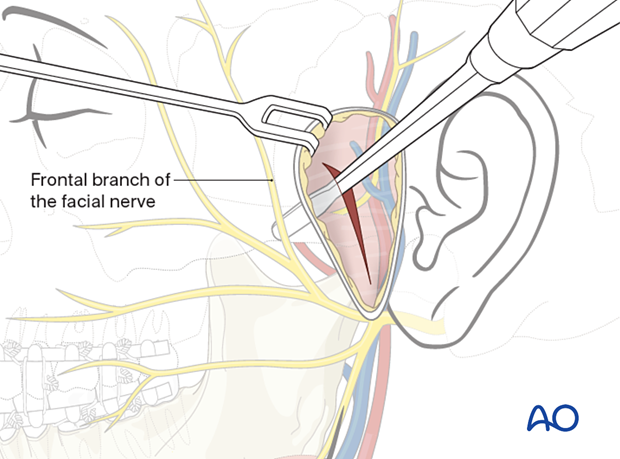
Coronal view of dissection to the lateral portion of the zygomatic arch and mandibular condyle region.
Note: the temporal branch of the facial nerve is protected within the superficial layer of the temporalis fascia.
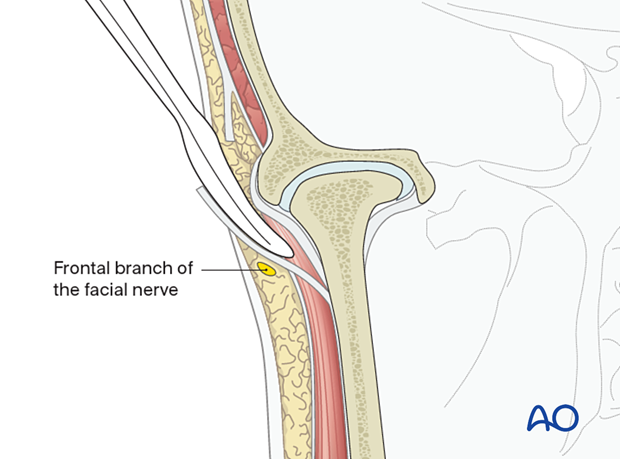
Periosteal elevators are used to dissect over the superior aspect of the zygomatic arch onto the temporal bone. Dissection of the arch anteriorly approximately 2 cm is readily performed by subperiosteal dissection. Fractures at the root of the zygomatic arch should be readily visible.

4. Wound closure
The temporalis fascia is closed as the next step.
Skin and subcutaneous sutures are placed.
A pressure dressing may be placed over this wound according to surgeon preference.
